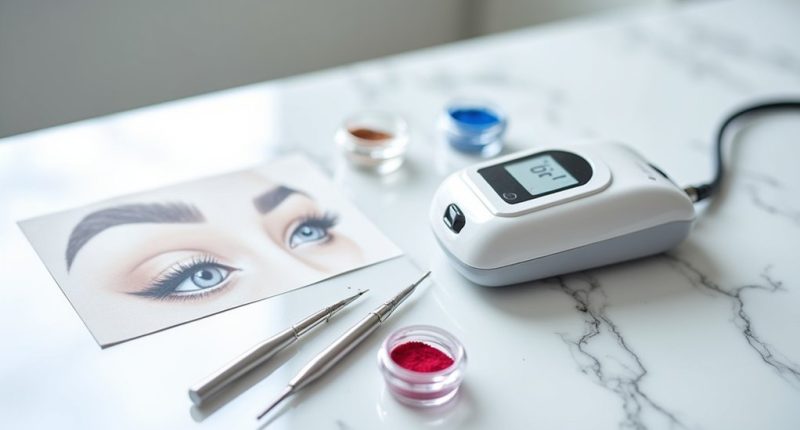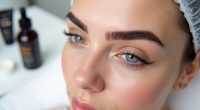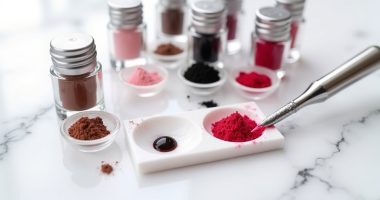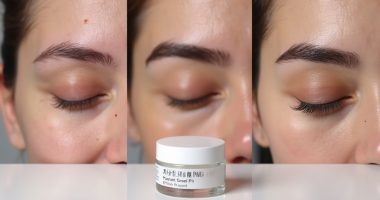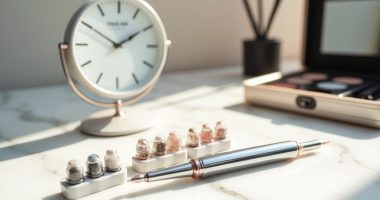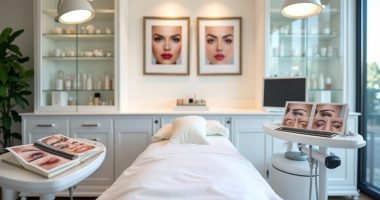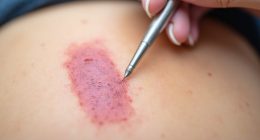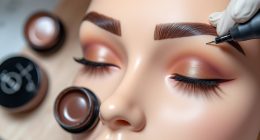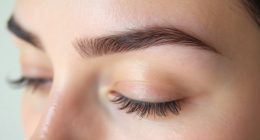Permanent makeup places pigment beneath the skin's surface, creating semi-permanent enhancements lasting 1-5 years. No more daily makeup struggles! Procedures include eyebrows, eyeliner, and lip color—perfect for busy folks, athletes, and those with mobility issues. The healing process takes 7-14 days, with initial redness and swelling. Safety depends on choosing qualified artists with proper sterilization practices. Skip the bargain hunters; this isn't where you want to pinch pennies. The details matter.

While traditional makeup routines can eat up precious morning minutes, permanent makeup offers a solution that lasts far beyond the daily shower. This cosmetic technique places pigment into the epidermis at a depth of 0.1-0.2mm, creating semi-permanent results that typically last between 1-5 years.
Unlike traditional tattoos that last a lifetime, these enhancements gradually fade, requiring touch-ups to maintain their appearance. The techniques comparison reveals significant differences between methods—microblading creates hair-like strokes for eyebrows, while machine-applied powder/ombre brows deliver a softer, filled-in look.
Permanent makeup fades with dignity—unlike that regrettable butterfly tattoo from spring break 2005.
Artist selection matters. A lot. Choose poorly and you'll be hiding your face longer than the makeup lasts.
Permanent makeup includes various procedures beyond eyebrows. Eyeliner, lip color, areola restoration, and even scalp micropigmentation for those thinning up top. Permanent makeup has ancient beauty roots that have evolved into the sophisticated techniques we see today. Imagine waking up looking put-together. No smudged eyeliner. No faded lipstick. Just roll out of bed and go.
It's particularly valuable for individuals with vision or mobility challenges who struggle with daily makeup application. Athletes love it too—swim, sweat, whatever. Your makeup stays put.
The process starts with a consultation where expectations are discussed. Then comes the actual procedure. Numbing cream helps, but let's be real—tiny needles in your face won't feel great. The healing process takes 7-14 days. Expect some redness and swelling. Nothing says "I just got my face tattooed" like puffy, red eyebrows.
Safety concerns? Yes, there are some. The FDA regulates permanent makeup as cosmetics. Proper sterilization is critical. Disposable tools and needles are non-negotiable. Side effects can include allergic reactions, uneven results, or pigment migration. Infections happen, though rarely when protocols are followed.
Finding a qualified artist isn't optional. Verify licenses and certifications. Review their portfolio—extensively. Good artists have nothing to hide. Before committing, research your artist's education and credentials, as requirements vary significantly by state with some requiring only minimal weekend training. Check sterilization practices and ask about pigment ingredients. Client references help too. The cheapest option is rarely the best. Your face isn't the place to pinch pennies.
Permanent makeup offers convenience and consistency. It saves time and boosts confidence. Microblading can transform sparse eyebrows into naturally defined arches that perfectly frame your face without daily application. But it's still a needle putting pigment into your skin. Choose wisely, or that "convenience" might become your biggest regret.
Frequently Asked Questions
Is Permanent Makeup Suitable for All Skin Types?
No, permanent makeup isn't one-size-fits-all.
Skin type considerations dramatically affect results. Oily skin? Expect faster fading and blurring. Dry skin holds pigment well but needs gentle application. Sensitive types? Patch testing is non-negotiable.
Some conditions are complete deal-breakers—active acne, rosacea, or keloid tendencies.
Makeup longevity varies wildly depending on your skin's elasticity and oil production. Normal skin? Lucky you.
Everyone else? Specific techniques exist for specific skin types. Just facts.
How Much Does Permanent Makeup Typically Cost?
Permanent makeup isn't cheap. Average pricing ranges widely: eyebrows run $400-$600, eyeliner $200-$600, lips $300-$800.
Want your scalp done? That'll set you back $800-$3,000. Ouch.
Several procedure factors influence costs. Location matters—big cities, bigger bills. Technician experience? More skills, more zeros. Studio reputation plays a role too.
Don't forget hidden costs: consultations ($30-$85), aftercare kits ($20-$40), and touch-ups ($100-$350).
Like anything permanent, you get what you pay for.
Can Permanent Makeup Cause Allergic Reactions?
Yes, permanent makeup can absolutely trigger allergic reactions. Not kidding around here.
Pigment reactions happen, folks. Sometimes right away, sometimes years later—surprise! Red pigments? Most common troublemakers.
Symptoms range from mild itching to full-blown swelling and rashes. Nobody wants that on their face.
Allergy testing before getting inked is smart, though many skip it. Your body, your rules—but sensitive types should definitely think twice before jumping in.
How Long Is the Healing Process After the Procedure?
The healing timeline for permanent makeup is a journey. Not a quick one, either.
Initially, expect swelling and redness—your face won't be Instagram-ready, that's for sure. The entire process spans 4-8 weeks, with distinct phases.
First week: scabbing and flaking.
Second week: patchy appearance as scabs fall off.
Weeks 3-4: color reappearance.
Aftercare instructions are essential during this time. No picking scabs!
Full results settle by weeks 4-6. Worth the wait? Most think so.
Can I Get an MRI With Permanent Makeup?
Yes, MRIs with permanent makeup are generally safe.
About 2% of people experience mild reactions—tingling or swelling that disappears quickly. Iron oxide pigments are the usual culprits.
Those considering tattoo removal should know that older ink formulas might cause more issues.
Eyeliner tattoos? More likely to react due to thin skin.
Smart move: just tell the technicians beforehand.
The risk of skipping a necessary MRI? Way higher than any temporary discomfort from your fancy brows.
